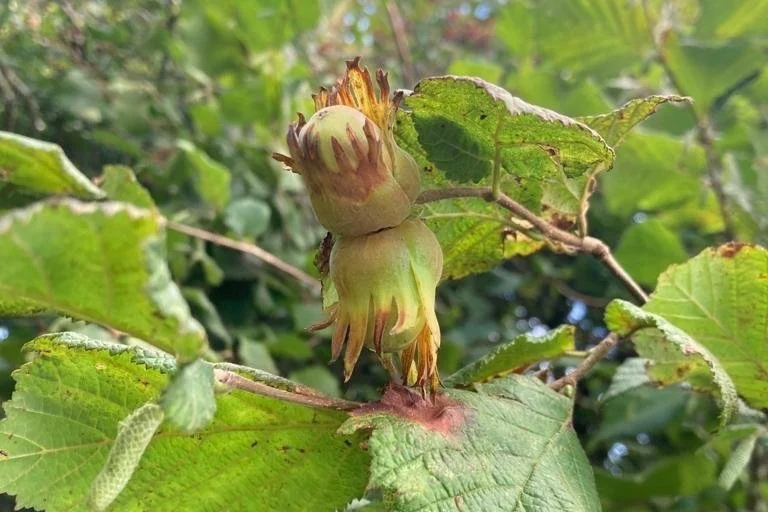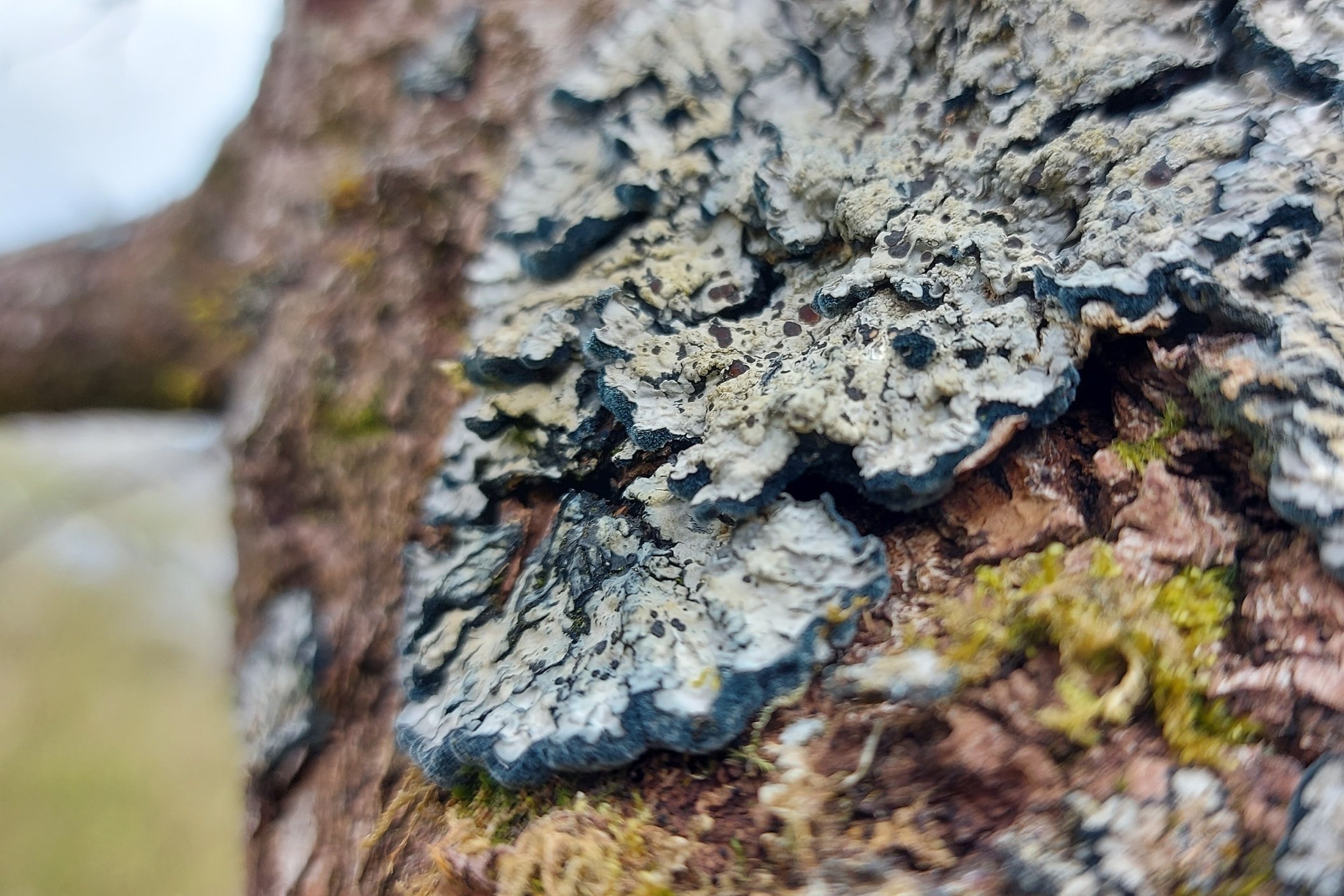The Wildwood Seed Project: the Search for Atlantic Hazelwoods, Part 2
Jeremy Turkington, Hometree’s Seed Collector and Seed Bank Coordinator, writes in depth about the Atlantic Hazelwoods.
Read the part one of the series: Early Autumn Update on the Wildwood Seed Project.
The authentic landscape of Ireland is western Atlantic temperate rainforest dominated by nature's highest achievement in Ireland: Oak canopy. However, this month Ancient Hazel Woodland springs to the fore, nothing less than an obsession really. Two intriguing points about the Hazel tree are: one, it just doesn’t know when to grow old; two, it doesn't even have the decency to grow as a majestic tree. Though I feel a disservice towards not giving it a fair hearing. So, let’s talk about Hazel!
One thing that always strikes me about Hazel as an organism is its ability to continually regenerate shoots from its root-plate. It’s essentially an infinitely renewable resource. Its individual poles will grow up, they’ll mature and they’ll retrench in a naturally replenishing cycle, if they’re left to their own devices, they could in theory be incredibly long lived, hundreds and possibly more than 1000 years old.
The Hazel's multi-stemmed growth pattern poses a significant challenge when attempting to determine the age of an individual tree using traditional methods. These trees can appear simultaneously ancient and young, lending them an eternal youthfulness that defies conventional age profiling. In reality, some of these hazels can rival the age of our most ancient and veteran trees. Unfortunately, hazel often remains overlooked, being mistaken as a mere spreading bush and, in some regions, even considered a weed.In August I felt privileged to be shown coastal Atlantic Hazelwood. Brought to tiny isolated pockets tucked away in remote valleys, sheltered hollows and ravines on the far fringes of peninsulas. Without the kindness, usually of a proud custodian looking after you and assisting in what you’re doing, you could spend lifetimes trying to find these remnants on your own and fail. I’m always acutely aware that a lad from Tyrone has no business advocating ‘wilding’ to a hill farmer in West Cork or Kerry who recall the recent memory of all the blood, sweat and tears it took to make this land work for them and multiple generations before. There is common ground and a mutual respect there and always a welcome.
You can sometimes spot Atlantic Hazelwoods from a distance on approach, looking for telltale, steep, sloping, wind clipped, totally inaccessible canopies clinging to the land. Other times, you find yourself moving easily into places that feel ancient.
As you move through a woodland you suddenly find yourself standing in pockets of woodland often within a younger woodland that are potentially ancient but not proven as yet. I call these the ‘Russian doll remnants’.
There’s such a cosy and inviting atmosphere about a hazel woodland. You do cross a threshold, under a low closed canopy of leaves, everything becomes miniature. There’s immense inordinate beauty and the secret is always, the more you look, the more you see.
There may be several scouting visits into a woodland before gathering seeds but you never truly enter the same woodland twice, things are ever changing, transmuting and moving on in its own cyclical, divine drama. There’s mind-blowing complexity of multiple symbiotic relationships, communication networks, everything functioning as a whole and hundreds of different types of insects inhabit every thinkable niche in these vibrant ecosystems.
The rapidly unpredictable chaos of the maritime weather, high rainfall and cool wet conditions allow lichens to drip from tree trunks and ferns to unfurl all the way along the crown architecture of the branches, these plants that grow on other plants are known as Epiphytes.Thick carpets of moss cushion boulders, roots and rocky ledges, loving moisture and humidity.
In early morning forays into these places, you sense all eyes are on you. You might glimpse a Pine marten or a red squirrel and you’ll hear the odd fox munching on kernels but they have a memory too and they know you’re there before you even do so quickly vanish. Nutshells from wood mice litter the forest floor. Rooks and Jays screech above your head cursing your unfamiliar intrusion into their wild trees, nuts and blackberries.
I’m mindful that every seed is precious. My intention for them is integration into seed orchards once they’re saplings to then exponentially increase seed supply grown from those trees for Hometree's organic tree nursery production at scale. Hence, there’s never an exploitation or if there is, it’s sensitive exploitation and I always ask the tree.
You can’t help but always have little internal dialogues with the trees you’re collecting from, they ask me, if how biodiversity is achieved still remains beyond science? Where’s the mystery of it? There’s still so much we don’t know about these places but we can feel it, a timeless, ageless, sixth sense reality.
Hazel has always been core to the Irish story. We know that Hazel was absolutely vital to our ancient ancestors, it was used to fuel fires and to build just about everything and anything needed for survival. Its nuts are nature's most concentrated protein source, central in the diet of early settlers, primarily packed with Arginine, Folic Acid, Vit E, Copper, Magnesium, Potassium. With excellent storage qualities it met the nutritional requirements and aided brain function and development.
Hazel was once so abundant that the Irish name for Sylvan Wildwood in the old Gaelic language is Coill derived from the word for Hazel, Coll. Coill cnó (cnó means nut) is Hazelnut Wood. Col, Cole, Cool, Cull, Cul, Coyle, Kyle, Quill are all derivations associated with Hazel commonly found in placenames.
For the seed collector, Irish placename origins and the accounts of native trees within them, offer a repository of encoded clues to dominant species, soil type, rock type and ultimately species or wildwood remnants a particular townland might reveal when scouting.
Stone ring forts scattered across the countryside, often referred to as fairy forts, are mostly the remnants of ancient homesteads in which round houses were woven entirely from Hazel in temporal rhythm with their environment. As a model of sustainable building by today’s standards, hazel rods were coppiced to build affordable housing for people. Of course, enormous piles of hazelnut shells have been unearthed in the settlements of Mesolithic hunter gatherers and in Neolithic and Bronze age archaeological digs too.
In early Irish society under Breth Comaithchesa, (the laws of the Neighbour-hood) Hazel was elevated to a noble of the woods or Lord of the forest to join its peers Oak, Holly, Yew, Ash, Crab Apple and Scots Pine. Reflecting its reverence in the daily lives of our pastoral ancestors. By operating a self-sufficient agricultural economy regulated through tribal and family relationships, trees were protected in direct correlation to their significance to the community. In modern Irish society, sadly, Hazel’s value as a building material or food source diminished. It was since relegated to ‘scrub’ encroaching on food production, ‘Aul bushes’ to be grubbed up and the land put to practical use. ‘Scrub’, being a modern economic term describing a landscape. Its ecological equivalent would be pioneer or regenerating woodland or the foundation of locally adapted genetic material or the spontaneous formation of wild natural ecosystems.
Irish mythology continually refers to trees, the first thing to ever come into creation was a hazel tree. The axis of the Earth, it was known as the diviner of hidden wisdom. Diviners today still seek hidden underground wells using forked branches cut from a Hazel tree to guide them to the exact spot to sink a well. The ‘Salmon of Knowledge’ is a well-known Irish fable that speaks to our collective consciousness about inspiration, creative flow or the importance of trees in the landscape, to freshwater ecology and our own sacred well-being.
As modern-day humans we’re often paralysed by the thought we can’t do anything. Ireland's indigenous forest culture is deeply forgotten, yes but it’s not lost in the national psyche, far from it. We need Nature. I would truly love it if over the course of our lifetimes we regain the wisdom to allow nature to rebound and renew our relationships with it, with all our knowledge we know what to do to create permanent spaces for Nature.
As our numbers grow, Hometree charity resonates with so many people because it simply addresses an urgent need, our native forests have disappeared and they’re worth bringing back. We’re here to help an island to reforest itself. We deliver a lot of impact for those who support our vision, we connect people to their power and provide an opportunity for each of us to make far reaching positive impacts.
I’ve arrived at a realisation that Hometree staff are kind of like Mycelium, constantly working underground, making connections, navigating passageways, sharing information and redistributing valuable resources to where they’re most needed. Its fruiting body ensures communities experience the multiple cultural, spiritual and economic benefits of landscape scale restoration in Ireland, so that they can then be at the forefront of these efforts long into the future. Even the tiniest efforts in favour of nature yield profoundly positive impacts on our lives. They create vibrant, robust, and profoundly meaningful places for us to work, play, and proudly call home.
Hometree would like to extend thank you to Lifes2good Foundation for financial support of this project. Please note, that any opinions and ideas expressed in this article are Hometree's only and are in no way related to Lifes2good Foundation.




